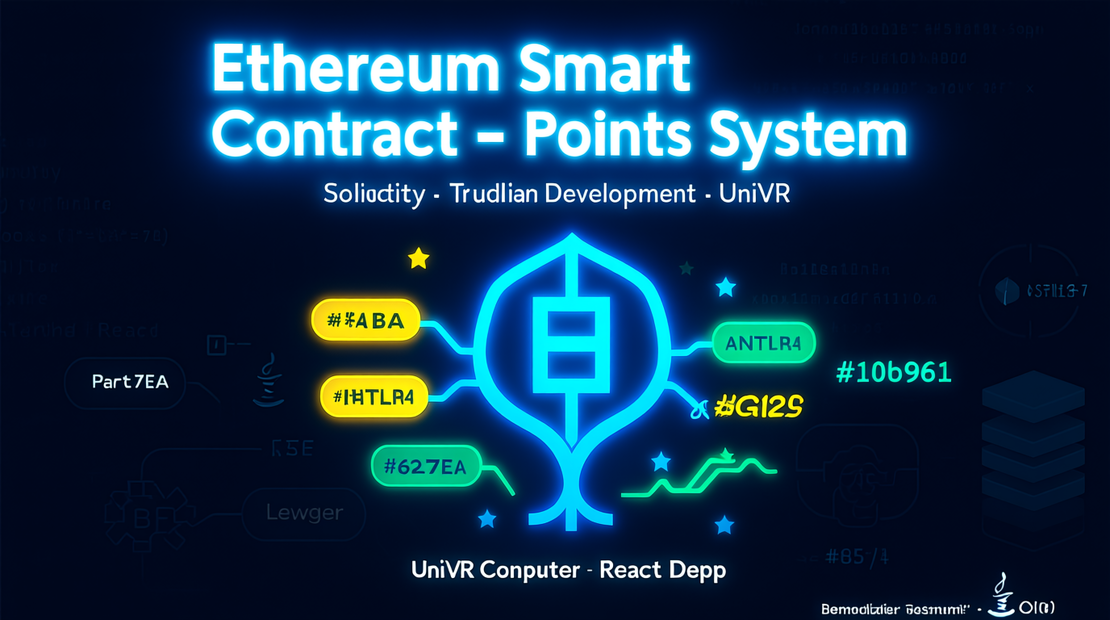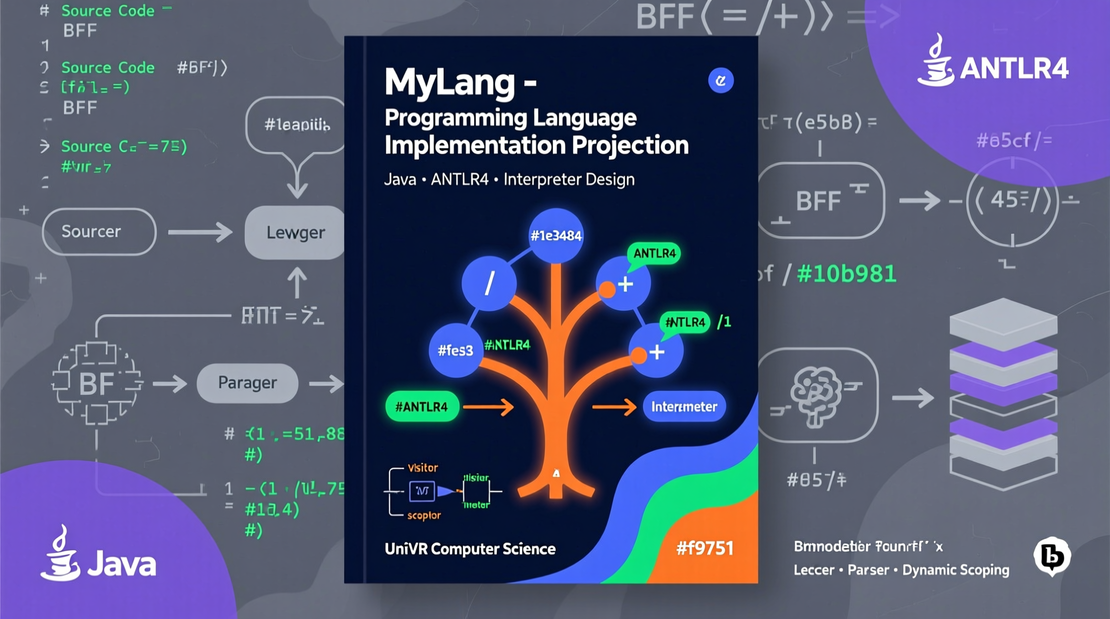
Configuratore Auto Java - Architettura MVC e Design Patterns
- Tech projects
- September 18, 2024
Table of Contents
The Genesis of the Project: From Academic Need to Technical Excellence
The Programming 2 exam at the University of Verona represents a pivotal moment in the Computer Science curriculum: the transition from procedural programming to advanced object-oriented paradigms. When I was assigned the project to develop a modular and extensible product configurator, I saw the perfect opportunity to demonstrate my mastery of fundamental software engineering principles.
The goal was ambitious: to create a system that didn’t simply function, but exemplified best practices in software architecture, design patterns, and maintainable code—principles that characterize quality enterprise software.
From Idea to Implementation: A Scalable Modular System
The main challenge was not just to develop a configurator, but to design it with a modular architecture that would allow:
- Extensibility without changes to the core system
- Maintainability through separation of concerns
- Testability via design for automated testing
- Scalability to support complex products
I chose to focus on a car configurator because it represents a complex domain with:
- Multiple interdependent options (engine, interior, exterior)
- Sophisticated configuration constraints
- Dynamic pricing based on user selections
- Intuitive user experience despite the complexity
Software Architecture and Design Patterns
MVC Architecture Implementation
The implementation strictly follows the Model-View-Controller pattern:
📊 Model Layer - Business Logic Core
// Configuration state management and business rules
- Product and option representation Configurable
- Validation logic for valid combinations
- Pricing engine for dynamic cost calculations
- Data persistence for saving configurations
🎨 View Layer - JavaFX User Interface
- Responsive GUI with JavaFX for optimal user interaction
- Component-based design for reusable UI elements
- Event-driven interface for real-time configuration updates
- Accessibility features for user inclusiveness
🎮 Controller Layer - Interaction Management
- Sophisticated event handling for user interactions
- State synchronization between model and view layers
- Validation orchestration for user input
- Navigation flow management for a seamless user experience
Advanced Design Patterns Used
Factory Pattern for Product Creation
- Configurator Factory for instantiating configurable products
- Option Factory for creating modular components
- Abstract Factory for related product families
- Extensibility for new product types without code changes
Observer Pattern for Real-time Updates
- Configuration Observer for monitoring state changes
- Price Observer for real-time cost updates
- UI Observer for synchronizing interface elements
- Decoupled communication between system components
Technology Stack and Enterprise Tools
Core Technologies
- Java 17+: Core language for robustness and performance
- JavaFX: Modern GUI framework for desktop applications
- JUnit: Testing framework for comprehensive automated testing
- Maven/Gradle: Build automation for dependency management
Development Environment
- IntelliJ IDEA: Professional IDE for maximum productivity
- Git Version Control: Source control for collaborative development
- Code Quality Tools: Checkstyle, PMD for code standards
- Documentation: Javadoc for complete API documentation
Modular Structure and Code Organization
Package Strategic Architecture
src/main/java/
├── controller/ # Event management and user interactions
├── model/ # Business logic and data representations
├── view/ # JavaFX UI components and layouts
├── exceptions/ # Custom exception handling
└── utility/ # Support classes and helper methods
Separation of Concerns Benefits
- Independent development of different layers
- Testing isolation for effective unit testing
- Code reusability through modular components
- Maintenance efficiency via clear responsibilities
Advanced Configurator Features
Sophisticated Configuration Engine
- Multi-step wizard for guided configuration experience
- Automatic Dependency resolution for related options
- Conflict detection and resolution suggestions
- Real-time validation with immediate feedback
Dynamic Pricing System
- Base price calculation with option premiums
- Discount rules for package combinations
- Regionalized Tax calculation
- Export quotation in multiple formats
Advanced Data Management
- Configuration persistence for session recovery
- Export/Import customized configurations
- History tracking for previous configurations
- Template system for predefined configurations
Team Development and Collaboration
Collaborative Development Approach
Team Members:
- Simone Mattioli: Lead Developer and Architecture Design
- David Cavada: UI/UX Development and Testing
- Omar Bodio: Business Logic and Data Management
Professional Development Practices
- Systematic Code reviews for quality assurance
- Git workflow with feature branches and pull requests
- Documentation standards for knowledge sharing
- Testing strategy coordinated for complete coverage
Testing Strategy and Quality Assurance
Comprehensive Testing Approach
- Unit Tests: Each component model tested in isolation
- Integration Tests: Interaction between layers verified
- UI Tests: User interface behavior validation
- Performance Tests: Load testing for scalability
Code Quality Metrics
- Test Coverage: >90% for critical business logic
- Cyclomatic Complexity: Maintained below enterprise thresholds
- Code Duplication: Minimized through systematic refactoring
- Documentation Coverage: Complete Javadoc for public APIs
Educational Impact and Professional Skills
Software Engineering Principles Mastery
The project provided insight into:
- Practical application of SOLID Principles
- Design Patterns implementation in real-world scenarios
- Clean Code practices for maintainable software
- Agile Development methodology with iterative improvements
Enterprise Development Skills
- Large codebase management and organization
- Team collaboration tools and workflows
- Professional documentation standards
- Quality assurance processes and metrics
Scalability and Future Enhancements
Extensibility Architecture
The system is designed to support:
- New product categories without architectural changes
- Additional configuration options via plugin system
- Multiple UI themes through CSS styling
- Internationalization for global market support
Technology Evolution Readiness
- Cloud deployment capabilities via containerization
- Web interface adaptation using Spring Boot
- Mobile responsiveness with responsive design patterns
- API exposure for integration with external systems
Business Value and Real-World Applications
Industry Applications Potential
The configurator can be adapted for:
- Automotive industry for dealership systems
- Electronics manufacturing for custom PC building
- Furniture retail for modular furniture configuration
- Enterprise software for complex product catalogs
Economic Impact Considerations
- Sales process automation for reduced manual effort
- Customer self-service capabilities
- Reduced configuration errors via validation automation
- Faster quote generation for improved customer experience
An Example of Academic Excellence
This project demonstrates how A university assignment can be transformed into a showcase of professional competencies through:
- A rigorous engineering approach from inception
- Industry-standard practices adoption
- Comprehensive documentation for future reference
- Collaborative development and simulation of real-world teams
Fundamental Lessons Learned
- Architecture planning is an investment that pays off in the long run
- Code quality is not optional but a fundamental requirement
- Team collaboration amplifies individual capabilities
- Documentation excellence facilitates knowledge transfer
Conclusions: From Learning to Professional Application
The Java Auto Configurator represents the perfect synthesis of academic rigor and professional applicability. Through the implementation of enterprise design patterns, robust MVC architecture, and comprehensive testing, the project demonstrates that university excellence can translate directly into industry-ready competencies.
The project continues to serve as a reference implementation for advanced software engineering principles, demonstrating that investment in architectural quality and best practices produces software that transcends the confines of a single assignment to become a foundation for professional growth.


